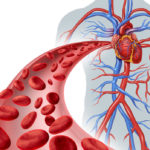Heart valve disease may be caused by:
- rheumatic fever, an immune response triggered by streptococcal bacteria, which can damage the heart valves and heart muscle. In our country this the commonest cause of heart valve disease
- bacterial endocarditis, an infection of the inner lining of the heart, including the valves
- stretching of the valve due to weakness of its tissue
- abnormality of the valve and chordae, which can cause regurgitation
- a build-up of calcium on the valve, often due to age or structural abnormality of the valve
- coronary artery disease and heart attack, which can affect the papillary muscles
- a congenital defect – for example, one person in every 400 is born with an aortic valve that has two leaflets, instead of the normal three.



